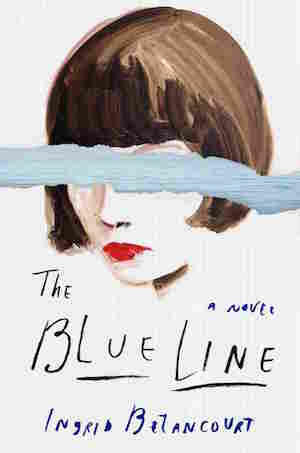
Colombian-French activist and politician Ingrid Betancourt rose to fame in 2010 with the release of her memoir, which chronicled her six-year captivity at the hands of Colombia’s FARC guerillas. She returns to the literary world once again this week, this time trying her hand at fiction laced with magical realism to imagine the capture and torture of two Argentine protesters in the 1970s. But while Betancourt possesses firsthand knowledge of the mental anguish brought on by such an experience, The Blue Line feels disappointingly incomplete.
Julia, the novel’s protagonist, is a young girl when she learns she has inherited the ability to view the future through the eyes of other people. Her beloved grandmother takes Julia under her wing, explaining that Julia is seeing life-threatening events before they take place. As Julia grows up in Buenos Aires, she keeps the gift a secret from her boyfriend Theo, who gets her involved with leftist politics. Then the Dirty War unfolds, and the two are taken captive by the military junta. Separated during an escape attempt, Julia raises the child she was carrying at the time of her arrest before learning that Theo is alive. But their reunion soon becomes sour as the two struggle to come to terms with their past.
 The Blue Line boasts the framework of a book that explores the immediate and long-term impact of prolonged captivity and torture, something Betancourt understands. But as it jumps through time and between countries, the plot holes become glaring. Betancourt is vague about a great deal of pivotal elements, whether it’s the torture itself or the relationship between Julia and Theo. The characters feel undeveloped as a result, and it’s difficult to become invested in their lives as the story plays out.
The Blue Line boasts the framework of a book that explores the immediate and long-term impact of prolonged captivity and torture, something Betancourt understands. But as it jumps through time and between countries, the plot holes become glaring. Betancourt is vague about a great deal of pivotal elements, whether it’s the torture itself or the relationship between Julia and Theo. The characters feel undeveloped as a result, and it’s difficult to become invested in their lives as the story plays out.
Betancourt opts for a quick-cut method of pushing the story forward; Julia is in prison one minute, the next she’s in France and soon after she’s in the United States with Theo. But the vignettes of Julia’s life aren’t fleshed out enough to explore connections, thereby showing the reader snapshots without context or chronological order.
Take, for example, the case of Olivier. When Julia first arrives in France as a young mother and refugee, she meets Olivier and quickly begins a romantic relationship with him. They are together for at least two decades, and he helps raise her son. But when Theo reenters Julia’s life, Olivier disappears with no explanation. He only returns at the end of the book with no fanfare and no deeper examination of his place in Julia’s life. This throwaway approach to characters and plot drags the novel down, making it impossible to reach the emotional targets Betancourt attempts to create.
The novel proves emotionally and chronologically ambitious, spanning over three decades. But the slapdash way Betancourt presents the story quickly becomes disorienting and convoluted. As the novel plays out, the lack of depth to the story and characters makes the constant jumping around in time unnecessarily complex with no real payoff. Meanwhile, the occasional reliance on Julia’s “gift” to push the story forward leans too heavily on the supernatural. If incorporating clairvoyance is an attempt at magical realism, it reads like too much of a crutch for the lackluster plot to do the genre justice.
The novel is at its most compelling when Betancourt digs into both Argentina’s political changes during the 1970s and the impact of long-term torture. With that considered, there are moments when the book feels as if it might turn a corner. But a rapid jump from the action or a frustratingly vague moment once again derails the promising narrative. Sadly, The Blue Line sticks too close to the surface to be engaging.
Bridey Heing is a freelance writer based in Washington, DC. More of her work can be found here.